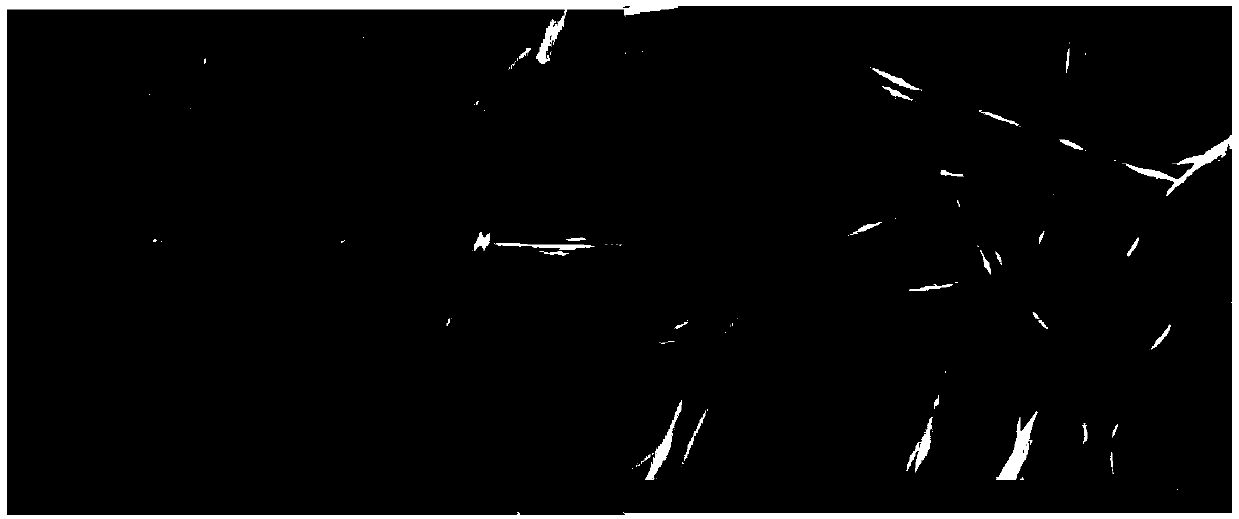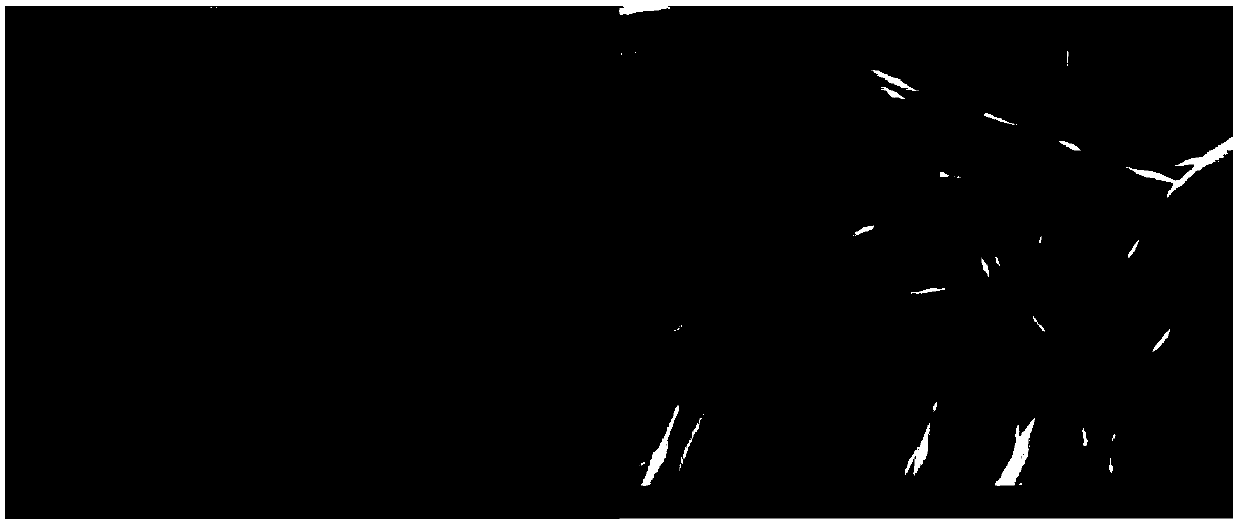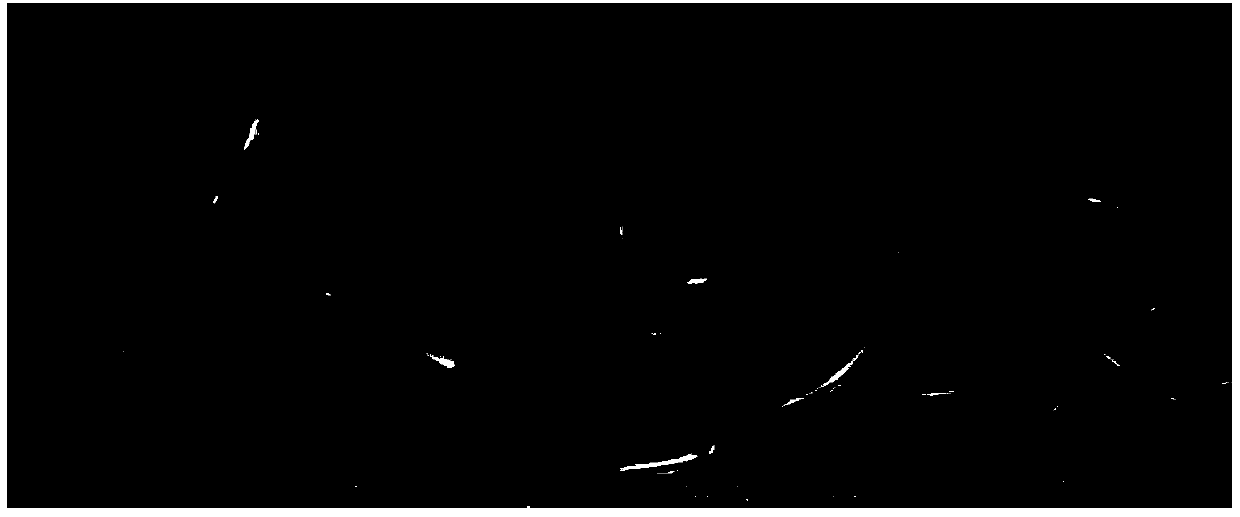Preparation method for polyimide with cross-linked structure and application of polyimide nanofiber membrane in lithium battery diaphragm
A technology of nanofiber membrane and cross-linked structure, which is applied in nanotechnology, structural parts, nanotechnology, etc. for materials and surface science, and can solve the impact of battery safety performance, insufficient mechanical properties, and low porosity of nanofiber membranes. problems, to achieve the effect of solving the poor safety of the battery at high temperature, solving the problem of insufficient temperature resistance, and excellent thermal dimensional stability
- Summary
- Abstract
- Description
- Claims
- Application Information
AI Technical Summary
Problems solved by technology
Method used
Image
Examples
Embodiment 1
[0033] Preparation of 3,3'4,4'-biphenyltetracarboxylic dianhydride / p-phenylenediamine (BPDA / p-PDA) cross-linked battery separator. (1) Weigh 2.8g of 3,3'4,4'‐biphenyltetracarboxylic dianhydride and 1.0g of p-phenylenediamine with a molar ratio of 1:1, and dissolve p-phenylenediamine in 30mlN,N ‐Dimethylformamide (DMF) solvent, mechanically stirred for 1 hour, then added 3,3'4,4'‐biphenyltetracarboxylic dianhydride into the reaction system, polycondensed for 6 hours under ice bath conditions to obtain moderate viscosity Polyamic acid solution, put the polyamic acid solution into a 20ml syringe, prepare a polyamic acid nanofiber film by electrospinning technology, and dry it in vacuum for 12 hours. Among them, the electrospinning parameters are: spinning voltage: 25kv; spinning temperature: 20°C; spinning humidity: 34%; syringe needle diameter: 12mm; receiving roller speed: 162r / min; receiving distance: 20cm. (2) The dried polyamic acid nanofiber membrane was etched in an ammon...
Embodiment 2
[0039] Preparation of 3,3'4,4'‐biphenyltetracarboxylic dianhydride / 4,4'‐diaminodiphenyl ether (BPDA / 4,4'‐ODA) crosslinked battery separator. (1) Weigh 2.6g of 3,3'4,4'-biphenyltetracarboxylic dianhydride and 1.8g of 4,4'-diaminodiphenyl ether with a molar ratio of 1:1, and mix 4,4'-diphenyl Aminodiphenyl ether was completely dissolved in 30ml of N,N‐dimethylformamide (DMF) solvent at one time, and after mechanical stirring for 1 hour, 3,3'4,4'‐biphenyltetracarboxylic dianhydride was added to the reaction system, The polyamic acid solution with moderate viscosity was obtained by mixing and polycondensing for 6 hours in an ice bath. The polyamic acid solution was filled into a 20ml syringe, and the polyamic acid nanofiber membrane was prepared by electrospinning technology, and dried in vacuum for 12 hours. Among them, the electrospinning parameters are: spinning voltage: 23kv; spinning temperature: 22°C; spinning humidity: 35%; syringe needle diameter: 12mm; receiving roller sp...
Embodiment 3
[0045] Preparation of battery separator with pyromellitic dianhydride / 4,4'-diaminodiphenyl ether (PMDA / 4,4'-ODA) cross-linked structure. (1) Weigh 3.2 g of pyromellitic dianhydride and 2.9 g of 4,4'-diaminodiphenyl ether at a molar ratio of 1:1, and dissolve 4,4'-diaminodiphenyl ether in In 30ml of N,N‐dimethylformamide (DMF) solvent, after mechanical stirring for 1h, add pyromellitic dianhydride into the reaction system, mix and polycondense under ice bath conditions for 6h to obtain a moderately viscous polyamic acid solution. The polyamic acid solution was filled into a 20ml syringe, and the polyamic acid nanofiber membrane was prepared by electrospinning technology, and dried in vacuum for 12 hours. Among them, the electrospinning parameters are: spinning voltage: 25kv; spinning temperature: 23°C; spinning humidity: 38%; syringe needle diameter: 12mm; receiving roller speed: 162r / min; receiving distance: 20cm. (2) The dried polyamic acid nanofiber membrane was etched in a...
PUM
| Property | Measurement | Unit |
|---|---|---|
| tensile strength | aaaaa | aaaaa |
| tensile strength | aaaaa | aaaaa |
| tensile strength | aaaaa | aaaaa |
Abstract
Description
Claims
Application Information
 Login to View More
Login to View More - R&D
- Intellectual Property
- Life Sciences
- Materials
- Tech Scout
- Unparalleled Data Quality
- Higher Quality Content
- 60% Fewer Hallucinations
Browse by: Latest US Patents, China's latest patents, Technical Efficacy Thesaurus, Application Domain, Technology Topic, Popular Technical Reports.
© 2025 PatSnap. All rights reserved.Legal|Privacy policy|Modern Slavery Act Transparency Statement|Sitemap|About US| Contact US: help@patsnap.com



